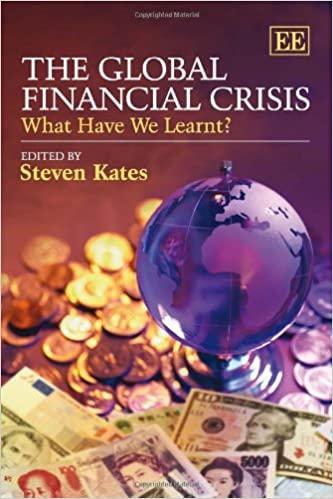Question
Part 2 (All Info Included) The first item on Pierres agenda is to devise a five-year investment plan. He has set aside $5 million to
Part 2 (All Info Included)
The first item on Pierres agenda is to devise a five-year investment plan. He has set aside $5 million to initially place into this portfolio and will not add any other funds later. Any investment proceeds realized during the five-year window will be reinvested. The goal is to generate as much money as possible by the end of the fifth year. The proceeds will go towards his senate campaign.
For brevity, we will call the investments A, B, C, D, and E. The below table shows the years that each investment can be invested in, the duration of time until the investments mature, and the maximum amount that can be invested in each investment (per period). For example, investment C can be invested in up to two times: at the beginning of year 1 or at the beginning of year 3. Each time the maximum investment amount is $3 million (so, in total, $6 million could be placed in this investment).
| Investment | Duration | Available Years | Max Amount per Investment |
| A | 1 | 1,2,4,5 | 2 |
| B | 2 | 2,4 | 3 |
| C | 2 | 1,3 | 3 |
| D | 3 | 1,2,3 | 1 |
| E | 4 | 2 | 5 |
The returns from the investments are shown below. These returns are realized when an investment matures (i.e., they are not all annual returns). Some investments have variable returns that are based on the year in which the investment was made, while others return the same amount no matter when the investment was made. There is also an option to invest in cash every year. There is no maximum amount for cash investments. Finally, regulations require that the total amount invested in A over the course of the 5 years cannot exceed the combined amount invested in B, C, D, and E over the 5 years.
| Year | A | B | C | D | E | Cash |
| 1 | 2.0% | 5% | 9% | 1.5% | ||
| 2 | 4.0% | 8% | 9% | 12% | 1.5% | |
| 3 | 6% | 9% | 1.5% | |||
| 4 | 3.0% | 8% | 1.5% | |||
| 5 | 2.0% |
|
|
|
| 1.5% |
For example, if $1 million is invested in C at the beginning of year 1, Pierre will realize a 5% return at the end of year 2/beginning of year 3 (because the duration of investment C is 2 years). In addition, Pierre would receive his $1 million principle back, so in total he would have $1 million + 0.05*$1 million = $1.05 Million available for reinvestment at the beginning of year 3.
Besides the above investments, Pierre would also like to invest $1 million in a combination of two individual stocks. Stock A is currently selling for $929.27 per share and Stock B is selling for $5.59 per share. Pierre is willing to split this investment between the two companies in one of three ways: i) $750,000/$250,000, ii) $500,000/$500,000, or iii) $250,000/$750,000, where the first number is the amount invested in Stock A and the second is the amount invested in Stock B.
Pierre has classified the daily volatility in the stock market into three groups: moderate, high, or low volatility. Based on an empirical study, Pierre found that the probability of moderate volatility is 0.7, and the probabilities of both high and low volatility are 0.15. He assumes that daily changes in stock prices follow a normal distribution, but the mean and standard deviation of the distribution depends on both the stock in question and the days volatility.
| Stock A | Moderate Volatility | High Volatility | Low Volatility |
| Mean | 0.636 | 0.85 | 0.3 |
| Standard Deviation | 8.6 | 12.5 | 4.3 |
| Stock B | Moderate Volatility | High Volatility | Low Volatility |
| Mean | 0.006 | 0.01 | 0.003 |
| Standard Deviation | 0.067 | 0.1 | 0.033 |
Pierre will hold this investment for up to 100 days, after which he will immediately sell all of the holdings. However, if at any time the value of our portfolio falls below $950,000 or above $1,100,000, he will immediately sell all of the holdings.
Question 5: Create a simulation that will compare options i, ii, and iii above. Which option seems to have the highest expected return?
Thanks!
Step by Step Solution
There are 3 Steps involved in it
Step: 1

Get Instant Access to Expert-Tailored Solutions
See step-by-step solutions with expert insights and AI powered tools for academic success
Step: 2

Step: 3

Ace Your Homework with AI
Get the answers you need in no time with our AI-driven, step-by-step assistance
Get Started


